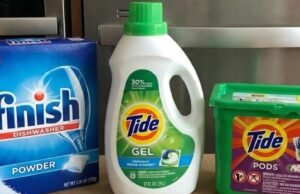If you’ve ever brewed coffee at home and felt something was off, chances are your grinder might be the culprit. Choosing the right coffee grinder isn’t just about price or looks it’s about matching the grinder to your brewing method.
I still remember my first grinder: whirring, clattering blade contraption that produced a mixture of powder and chunks. My coffee? Unreliable, stale, sometimes downright sour. Once I swapped that out for a burr grinder made especially for my pour-over gear, the results were immediate. Let’s make sure you skip that rough start.
- Blade vs. Burr Grinder: What’s the Difference?
Blade grinders cut beans irregularly. They’re inexpensive but generate uneven particle sizes, which can impair flavor negatively.
Burr grinders grind beans against two rough surfaces. This produces uniform grind size, which is important for even extraction.
Affiliate Tip: As a beginner, a budget burr grinder such as the Baratza Encore is a good option. It’s easy to use and well-suited to manual brewing techniques.
- Match Your Grinder to Your Brew Method
Different brewing methods need different grind sizes. Here’s a quick cheat sheet:
Brew MethodIdeal Grind TypeGrinder RecommendationFrench PressCoarseManual burr grinderPour-Over (V60)Medium-FineElectric burr grinder with settingsAeroPressMedium to FineAdjustable hand grinderEspressoFine and ConsistentEspresso-specific burr grinderCold BrewExtra CoarseBurr grinder with coarse range
Note: For espresso, avoid general-use grinders. You’ll need something with micro-adjustments like the Fellow Opus or Eureka Mignon.
- Manual vs. Electric: What Fits Your Routine?
Manual grinders are quiet, light, and great for travel or a single serving. But you’ll have to earn it—mini workout in the morning.
Electric grinders are the way to go if you desire speed and convenience. Higher end grinders enable grind size adjustment, timed dosing, and quieter operation.
Ask yourself: Do I make coffee for one person or a family? Do I want quiet or speed in the morning?
- Burr Material: Steel vs. Ceramic
Steel burrs are sharper, faster, and standard in premium grinders.
Ceramic burrs stay sharp for longer and generate less heat, aiding in flavor preservation.
For heavy day-to-day use, either will suffice but steel is more standard in modern, reliable models.
- Think About the Long Term: Maintenance and Durability
Low-end grinders burn out fast. Look for models with:
Replaceable burrs
Simple-to-clean components
Strong warranty and support
Affiliate Tip: Include a grinder cleaning brush in your kit cleaning your grinder extends its life and improves flavor.
Last Thoughts
A great coffee grinder is the backbone of every brewing setup. Think of it as a long-term investment not just in gear, but in flavor. Match it to your brew style, choose quality over convenience, and you’ll taste the difference in every cup.
read more: How an Espresso Shot Glass Can Improve Your Brewing Precision














[…] a specific farm, region, or country. Because it’s grown in a controlled environment, the flavor tends to reflect the terroir of that […]